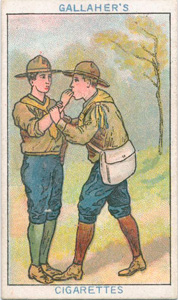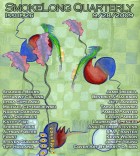Explain, if you will, your process for creating these works. From inception to product. I’m fascinated by the masterwork involved here.
I took a trip to Savannah, GA for the first time this summer and when I got back I decided I wanted to write a series of stories based on some of the imagery of the place. I realized only after I’d written the first four that they all had water in them, that water was central to them, and then much more self-consciously I wrote the last story, “Wet.” It makes sense though, considering every day at about 4 or 5 o’clock the sky would open up with these massive rain storms and that I spent a lot of time in the ocean and by the river and the marshes down there. But that I didn’t realize they all had water in them shows a lot about my process itself, or maybe about my lack of process. In general, I don’t know, and I didn’t know in particular, what these stories would be about, what kinds of imagery I would use, what ideas or themes or feelings I’d try to work with. I don’t ask myself those questions and prefer not to know. It’s neater I think just to start writing and then, sometimes, find the patterns and associations in the stories later on.
“A tar-stained cat.” “His particular crossing.” “In wont of water.” “The tender band of her suit.” “Carried ink to the streets.” What comes to you when looking at these ending word groups? To me they have their own particular drama and intensity. I find it rather remarkable.
I guess what comes to me is that in each of these endings I’m trying to turn a corner, make a slight jag in another direction from where the story might have seemed to me to be going, in the attempt to open things out, give the story a wider world. Sometimes I think I might have wanted to get to something a little more human, a little more emotional, and sometimes I may have wanted the opposite, going past the particular characters and whatever situation they are in. I think it’s maybe right though, what you say in your question, that I might be looking for the story’s drama, to increase the intensity a bit, before I close out.
How is what Joe Young is doing with microfiction alike and unlike what other microfiction writers are doing?
Hmm, a hard one. I’m certainly on the shortest end of things, consistently writing the shortest microfiction that I see being written. Other writers definitely delve into 50 or 30 word stories, but I’m not sure there are a lot of people who so exclusively specialize in stories of that extreme brevity. Of course, I could be wrong about that. Kim Chinquee certainly writes a lot of really short pieces, though for her it seems 100 words is as common, and maybe more so, than 40. What all the good microfiction writers are doing, and hopefully what I am, is pushing the form forward, seeing where it can go. There’s a lot of experimentation floating around flash fiction, and there’s a lot of talk about what it can do and how you might go about doing it. As you know, whole books are being written on the subject!
What place do you see for Reader in micro fiction? How much do you think of Reader (and when does Reader become part of your awareness/writing)?
I’m not sure I think about the reader at all when I’m writing microfiction, though that doesn’t mean I’m not trying to tell a story that a reader will enjoy. I definitely want to do that, tell a story. There’s a story I want to get out and I want to tell it as well as I can. I think I want to tell it to myself, given that I probably don’t know at the time of writing it what the story actually is. So, I shape the words, the sentences, the dialogue, the images in the hope that it tells me its story. If it then seems like it has, then I feel like I can give it to other readers and they might enjoy the story as much as I do. In saying that, I realize that’s when the reader most enters my awareness, when I consider letting the story be seen by other people. I use the idea of readers to tell me whether it’s a story worth being read by an audience bigger than me.
Baltimore, Everyday Genius, Publishing Genius Press, Easter Rabbit. Spill the (jelly) beans about all that is happening with you.
“Easter Rabbit” is my book of microfictions being released by Publishing Genius, a Baltimore area press run by Adam Robinson (www.publishinggenius.com). The book will be widely available in December 2009 but is available for preorder now, with a ship date for those copies of mid October. Everyday Genius is the e-zine run by Publishing Genius Press, which I will be guest editing in November. Baltimore is, of course, where I live, and it’s an amazing place, bursting with all manner of arty activity—writing and music and visual.



 The SmokeLong Grand Micro Contest (The Mikey) is now an annual competition celebrating and compensating the best micro fiction and nonfiction online.
The SmokeLong Grand Micro Contest (The Mikey) is now an annual competition celebrating and compensating the best micro fiction and nonfiction online.